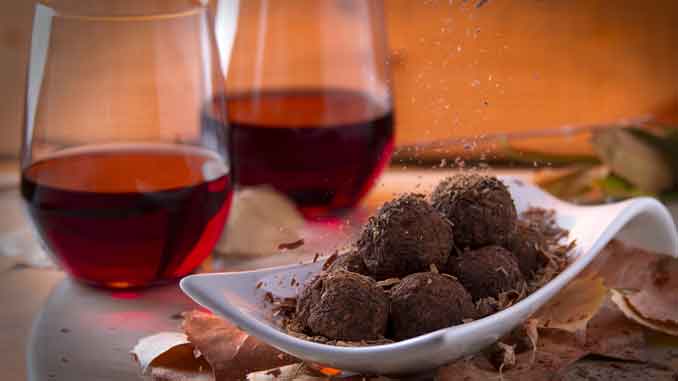
Permission give up guilt about chocolate & vino
Valentine’s Day is upon us, and tradition dictates that during this romantic holiday we all indulge in our favorite lover’s pairing: chocolate and red wine. However, the health and protective properties of each have recently come into question—if you’re wanting to separate fact from fiction and end this urgent, all-consuming debate, allow me to assist!
Both red wine and chocolate are derived from plant material: red wine from grapes and chocolate from the cocoa bean, which is the seed of the fruit from the cacao tree that grows in South America and West Africa. Both grapes and cocoa beans contain healthy amounts of phytochemicals: compounds that act as antioxidants, providing many health benefits beyond vitamins and minerals.
Red wine contains many potent antioxidants (you know, those things that combat everything from wrinkles to cancer?) but the most well-known is a polyphenol called resveratrol. Lately, resveratrol has been linked to many exciting health benefits including protecting brain function and lowering blood pressure.
This does not mean you should reach for the nearest bottle of red wine nightly. The 2015-2020 U.S. Dietary Guidelines for Americans recommends moderate consumption – one drink (5 ounces) per day for women and two drinks (10 ounces) per day for men. Consuming grape and grape juice can also provide resveratrol in an alcohol-free form and may be equally beneficial.
Moving onto chocolate: cocoa, the base ingredient in chocolate, contains high levels of flavonoids, which are a group of powerful antioxidants with many anti-inflammatory and immune system benefits. Flavonoids may also play a role in higher levels of “healthy” HDL cholesterol and better overall cardiovascular health. Cocoa contains phenylethylamine (PEA), which is sometimes known as a “love drug”, associated with elevated mood and higher energy levels. Dark chocolate is the best source of flavonoids among all the chocolates because it goes through the least amount of processing. Dark chocolate also contains less fat and sugar than milk or white chocolate. Choose dark chocolate with at least 70 percent pure cocoa and consume 1-1.5 ounces per day. In moderation, red wine and dark chocolate are good health choices not just on Valentine’s Day, but for any occasion. If you need a way to enjoy the benefits—and taste—of red wine and dark chocolate, visit the 22nd annual Lodi Wine & Chocolate Weekend February 9th and 10th from 11-4 PM.

